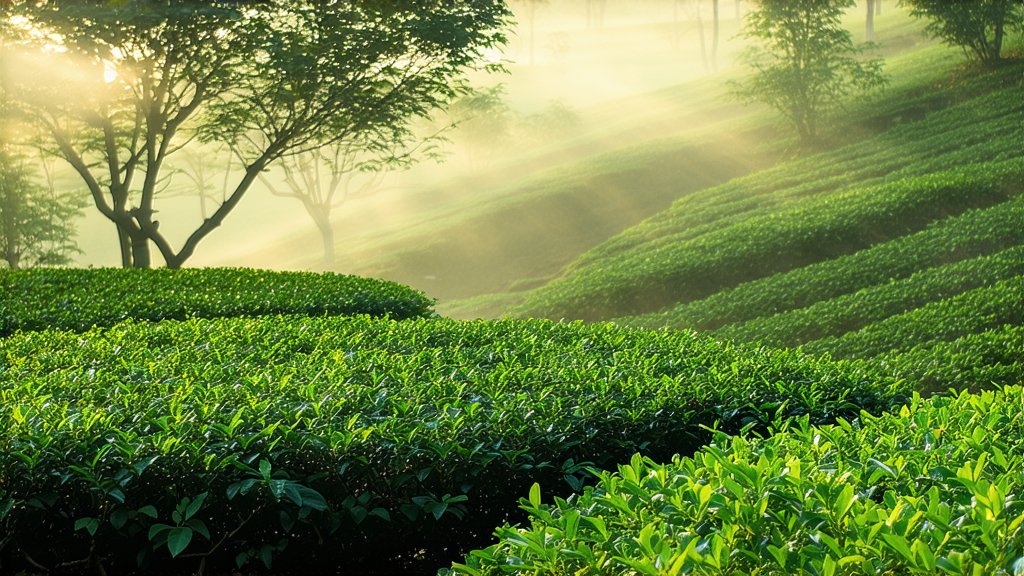
In the vast and diverse landscape of Chinese tea culture, one variety stands out for its unique fragrance, taste, and storied history—Tieguanyin. This exquisite Wulong tea, hailing from the mountainous terrains of Anxi County in Fujian Province, has captivated tea enthusiasts worldwide with its intricate flavor profile and meticulous preparation methods. As a revered tea culture researcher and master tea artist, I am delighted to guide you through the enchanting realm of Tieguanyin, shedding light on its origins, varieties, production techniques, and the art of appreciating this remarkable brew.
A Glimpse into History
The tale of Tieguanyin begins in the early Qing Dynasty, around the 18th century. According to legend, it was discovered by a poor scholar named Wang who stumbled upon a wild tea plant while studying in the Anxi region. Recognizing its potential, he propagated cuttings from this miraculous plant, which eventually became known as "Iron Goddess of Mercy" or Tieguanyin due to its weighty leaves (iron-like) and divine aroma. Over time, Tieguanyin gained immense popularity among the imperial court and common folk alike, solidifying its status as a symbol of Chinese tea excellence.
Varieties of Tieguanyin
While Tieguanyin is often considered a single tea type, it encompasses several sub-varieties, each with distinct characteristics influenced by factors such as terroir, altitude, and processing methods. Some notable ones include:
- Xiang Xing (Fragrant Type): Known for its floral and fruity notes, this variety is often compared to orchids and honeysuckle.
- Dan Cui (Single Cultivar): A pure strain of Tieguanyin, prized for its consistent quality and depth of flavor.
- Shuixian (Narcissus): Named after the narcissus flower, this variety boasts a sweet, creamy texture with hints of roasted nuts.
- Ben Shan (Original Mountain): Grown in the core areas of Anxi, these teas are highly sought after for their authenticity and superior taste.
The Craft of Tieguanyin Production
The magic of Tieguanyin lies not only in its genetic makeup but also in the meticulous craftsmanship involved in its production. The process can be broadly divided into several stages:
- Plucking: Only the tender shoots and leaves are handpicked, typically between March and October, ensuring optimal freshness and quality.
- Withering: Freshly harvested leaves are spread out under the sun or in shaded areas to reduce moisture content, allowing enzymes to start breaking down complex compounds.
- Bruising: Leaves undergo a gentle rolling process to release natural juices and initiate oxidation, crucial for developing the tea's distinctive aroma and flavor.
- Fixation: Through high-temperature roasting, enzymatic activity is halted, preserving the desired level of oxidation and locking in the tea's unique characteristics.
- Shaping: The fixed leaves are shaped into tight pellets or strips, enhancing both aesthetic appeal and infusion efficiency.
- Drying: Final drying removes any remaining moisture, ensuring longevity and stability of the tea.
Sensory Evaluation: Appreciating Tieguanyin
To truly savor Tieguanyin is to engage all senses in a meditative ritual. Here’s how you can embark on this journey:
- Visual Inspection: Observe the dry leaves for their uniformity, color, and shape. Upon infusion, appreciate the vibrant hue of the liquor and the unfurling dance of the leaves.
- Aroma: Before taking a sip, inhale deeply to capture the complex bouquet that ranges from floral and fruity to roasted and mineral.
- Taste: Sip slowly, allowing the tea to coat your palate, noting its smoothness, sweetness, and the lingering aftertaste, often described as "throat-tickling."
- Mouthfeel: Pay attention to the texture, whether it's silky, creamy, or astringent.
- Aftertaste: Reflect on the lasting impression left on your palate, a testament to the tea's quality and craftsmanship.
In conclusion, the world of Tieguanyin offers an unparalleled exploration into the depths of Chinese tea artistry. Its rich history, diverse varieties, intricate production process, and nuanced sensory experience make it a treasure worth discovering for any tea connoisseur. As we continue to celebrate and preserve this ancient tradition, may Tieguanyin continue to bridge cultures and inspire generations to come.